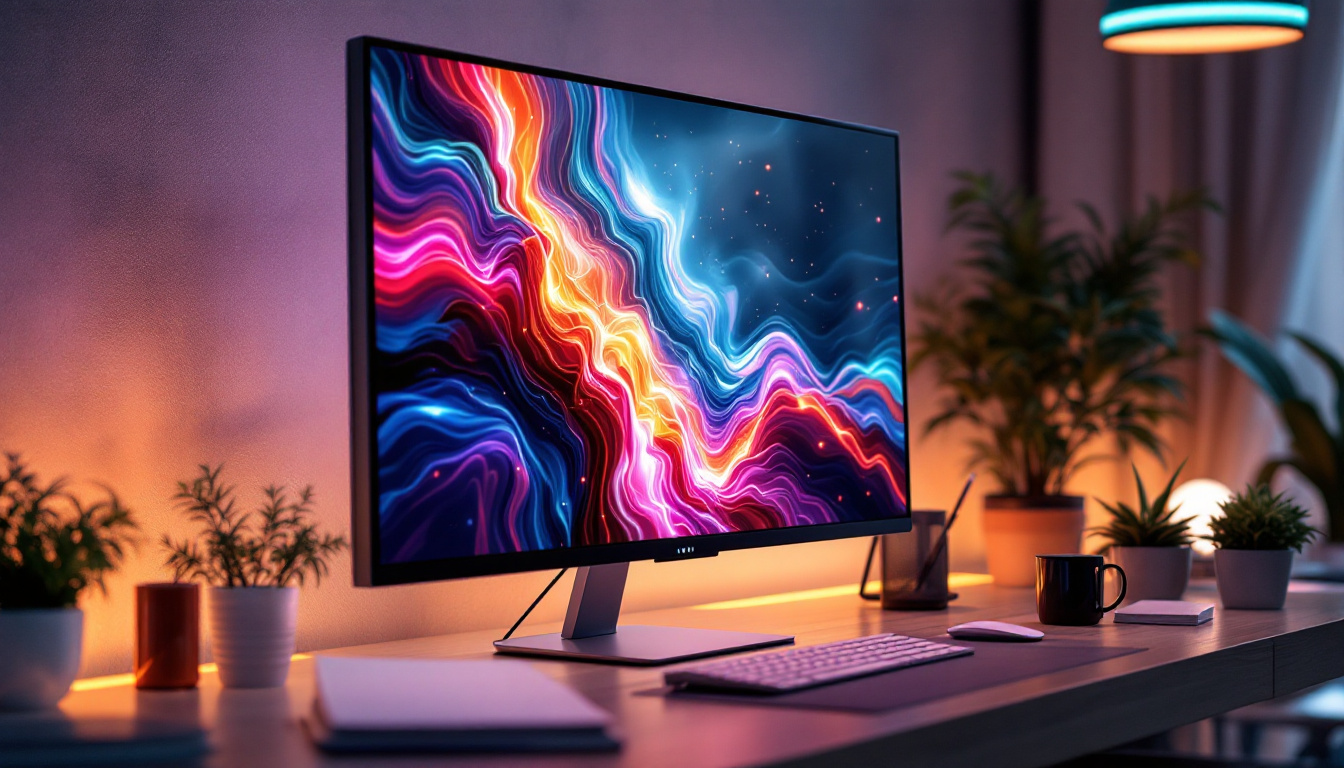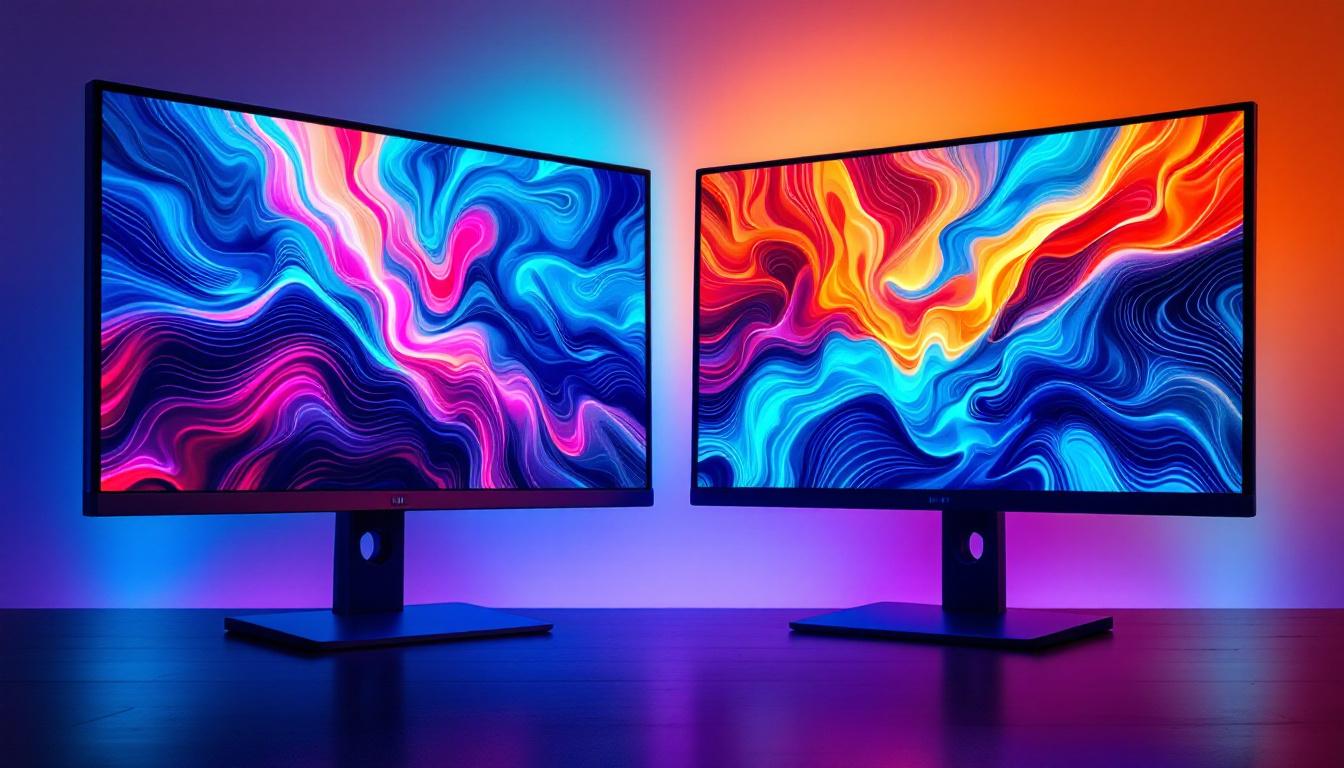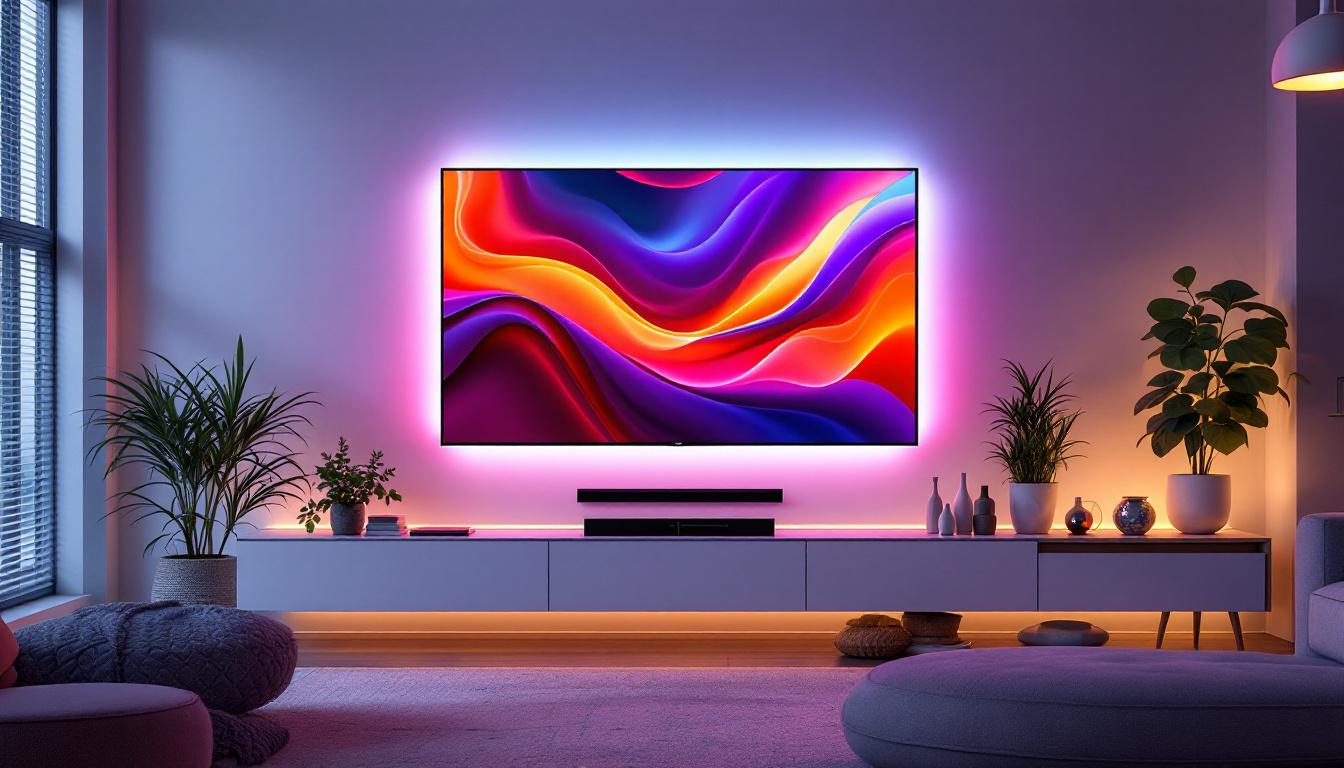In today’s fast-paced digital world, the importance of a high-quality monitor cannot be overstated. Whether for gaming, graphic design, or general productivity, the type of display can significantly impact the user experience. Among the various display technologies available, LED (Light Emitting Diode) displays have gained immense popularity. This article aims to provide a comprehensive understanding of LED displays, their advantages, and what to consider when purchasing a monitor during a sale.
Understanding LED Technology
LED technology has revolutionized the way we view content on screens. Unlike traditional LCD monitors that use fluorescent backlighting, LED monitors utilize tiny light-emitting diodes to illuminate the display. This fundamental difference leads to various advantages in terms of performance, energy efficiency, and overall user experience.
How LED Displays Work
At the core of LED technology are the diodes themselves, which emit light when an electric current passes through them. In LED monitors, these diodes can be arranged in different configurations, such as edge-lit or backlit, to produce high-quality images. Edge-lit displays have LEDs positioned along the edges, while backlit displays feature a grid of LEDs behind the screen. This arrangement allows for better brightness and contrast, enhancing the visual experience.
Types of LED Displays
There are primarily two types of LED displays: standard LED and OLED (Organic Light Emitting Diode). Standard LED monitors are widely used for general purposes, offering good brightness and color accuracy. On the other hand, OLED displays provide even better contrast ratios and color reproduction, as each pixel emits its own light. This technology allows for true blacks and vibrant colors, making OLED displays a favorite among professionals in creative fields.
Advantages of LED Displays
LED displays come with several advantages that make them a preferred choice for many users. Firstly, they offer superior energy efficiency compared to traditional monitors. This not only reduces electricity bills but also contributes to a more sustainable environment. Secondly, LED monitors typically have a longer lifespan, making them a cost-effective investment over time.
Moreover, LED displays provide better brightness and color accuracy, which is crucial for tasks that require precise visual representation, such as photo editing or gaming. The rapid response times of LED technology also enhance the overall viewing experience, reducing motion blur and ghosting effects during fast-paced action scenes.
In addition to these benefits, LED technology has also paved the way for innovations in display design. With the ability to create thinner and lighter screens, manufacturers have been able to produce sleek, modern displays that fit seamlessly into any environment. This has led to the rise of ultra-thin TVs and monitors that not only save space but also add a touch of elegance to home or office setups. Furthermore, advancements in LED technology have enabled the development of flexible displays, which can bend and curve, opening up new possibilities for creative applications in advertising and entertainment.
Another noteworthy aspect of LED displays is their adaptability to various lighting conditions. Many LED monitors come equipped with features that automatically adjust brightness levels based on ambient light, ensuring optimal viewing experiences whether in a dimly lit room or under bright sunlight. This adaptability is particularly beneficial for users who frequently switch between different environments, such as graphic designers or photographers who work both indoors and outdoors. As LED technology continues to evolve, we can expect even more enhancements that will further elevate the quality and versatility of visual displays.
Key Features to Consider When Buying an LED Monitor
When shopping for an LED monitor, especially during a sale, it is essential to consider several key features that can influence your decision. Understanding these features will help ensure that you choose a monitor that meets your specific needs and preferences.
Screen Size and Resolution
Screen size and resolution are two of the most critical factors to consider. The size of the monitor should align with your workspace and usage requirements. For general productivity, a 24 to 27-inch monitor is often ideal, while gamers may prefer larger screens for an immersive experience.
Resolution, measured in pixels, determines the clarity of the images displayed. Common resolutions include Full HD (1920×1080), Quad HD (2560×1440), and 4K (3840×2160). Higher resolutions provide sharper images, making them suitable for tasks that require detailed visuals. For instance, graphic designers and video editors will benefit immensely from a 4K monitor, as it allows for precise editing and a more accurate representation of colors. Additionally, consider the pixel density, which is crucial for smaller screens; higher pixel density means better clarity and detail, enhancing your overall viewing experience.
Refresh Rate and Response Time
The refresh rate, measured in Hertz (Hz), indicates how many times the monitor refreshes the image per second. For gaming, a refresh rate of 60Hz is the minimum, while 120Hz or higher is recommended for a smoother experience. Response time, measured in milliseconds (ms), refers to how quickly a pixel can change from one color to another. A lower response time is crucial for reducing motion blur during fast-paced gaming or video playback. In addition to gaming, a higher refresh rate can also benefit users who engage in activities such as video editing or watching high-frame-rate films, where fluid motion is essential for an enjoyable experience.
Panel Types: IPS vs. TN vs. VA
Different panel technologies can significantly affect the performance of an LED monitor. The three most common types are In-Plane Switching (IPS), Twisted Nematic (TN), and Vertical Alignment (VA). IPS panels are known for their excellent color accuracy and wide viewing angles, making them ideal for creative professionals. TN panels, while generally cheaper, offer faster response times but poorer color reproduction and viewing angles. VA panels provide better contrast ratios than TN but may not match IPS in color accuracy. Furthermore, each panel type has its unique strengths and weaknesses that cater to different user needs; for example, gamers might prioritize the speed of TN panels, while photographers and designers might lean towards IPS for its superior color fidelity. Understanding these nuances can help you make a more informed choice based on your specific usage scenarios and preferences.
Benefits of Buying During a Sale
Purchasing a monitor during a sale can provide significant financial benefits. Retailers often offer substantial discounts on electronics, allowing consumers to acquire high-quality products at a fraction of the regular price. However, there are additional advantages to consider beyond just the cost savings.
Access to Latest Technology
Sales events often coincide with the release of new models, meaning consumers can take advantage of discounts on the latest technology. This is particularly beneficial for those looking to upgrade their current setup or invest in cutting-edge features that enhance their experience. By purchasing during a sale, buyers can access monitors with improved specifications, such as higher refresh rates, better color accuracy, and advanced connectivity options.
Wider Selection
During sales, retailers typically showcase a broader range of products, providing consumers with more options to choose from. This wider selection allows buyers to compare different models, brands, and features, ensuring they find the perfect monitor to suit their needs. Additionally, many retailers offer bundles that include accessories, such as monitor stands or cables, further enhancing the value of the purchase.
Extended Warranty and Return Policies
Many retailers offer extended warranties and favorable return policies during sales events. This added security can provide peace of mind, especially when investing in higher-priced items like monitors. An extended warranty can cover potential defects or issues that may arise after the purchase, while a flexible return policy allows buyers to test the monitor in their environment and return it if it does not meet their expectations.
Popular Brands in LED Monitors
When it comes to LED monitors, several brands have established themselves as leaders in the market. Each brand offers unique features and specifications that cater to different user needs. Understanding these brands can help consumers make informed decisions when purchasing a monitor.
LG
LG is renowned for its cutting-edge technology and innovative designs. The company offers a wide range of LED monitors, including ultra-wide options that provide expansive screen real estate for multitasking. LG monitors are known for their vibrant colors and excellent viewing angles, making them a popular choice among creative professionals and gamers alike.
Samsung
Samsung is another prominent player in the LED monitor market, offering a diverse selection of models that cater to various user preferences. Their monitors often feature advanced technologies, such as Quantum Dot and HDR support, which enhance color accuracy and brightness. Samsung’s commitment to quality and performance has made it a trusted brand for both casual users and professionals.
ASUS
ASUS is well-regarded for its gaming monitors, providing high refresh rates and low response times that are essential for competitive gaming. The brand also offers a range of monitors designed for content creators, featuring excellent color accuracy and calibration options. ASUS monitors often come with additional features, such as customizable RGB lighting and ergonomic designs, enhancing the overall user experience.
Conclusion
In conclusion, LED displays have transformed the way users interact with technology, offering superior performance and energy efficiency. When purchasing a monitor, especially during a sale, it is crucial to consider key features such as screen size, resolution, refresh rate, and panel type. By understanding the advantages of LED technology and the benefits of buying during a sale, consumers can make informed decisions that enhance their digital experience.
With popular brands like LG, Samsung, and ASUS leading the market, there are numerous options available to suit various needs and preferences. Whether for gaming, professional work, or general use, the right LED monitor can significantly improve productivity and enjoyment. As technology continues to evolve, staying informed about the latest developments and trends will ensure that users make the best choices for their display needs.
As the next sale approaches, take the time to research and compare different models to find the perfect LED monitor that fits both your budget and requirements. Happy shopping!
Discover LumenMatrix’s Advanced LED Display Solutions
Ready to elevate your visual experience with the latest in LED technology? Look no further than LumenMatrix, a pioneer in crafting immersive LED display modules tailored for any application. From vibrant Indoor LED Walls to dynamic Outdoor LED Displays, and from versatile Vehicle LED Displays to sleek LED Poster Displays, LumenMatrix has the perfect solution to bring your vision to life. Embrace the future of visual communication with our innovative LED Sports Displays, interactive Floor LED Displays, and the stunning clarity of our Custom and All-in-One LED Displays, including the revolutionary LED Transparent Display. Don’t miss the opportunity to transform your space and captivate your audience. Check out LumenMatrix LED Display Solutions today and join the visual revolution!































